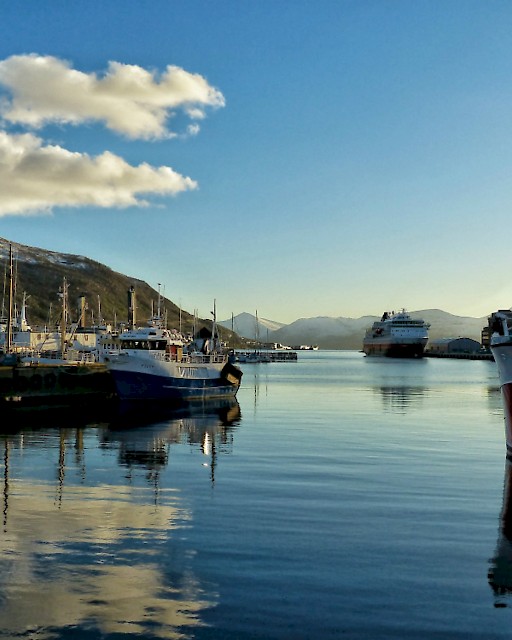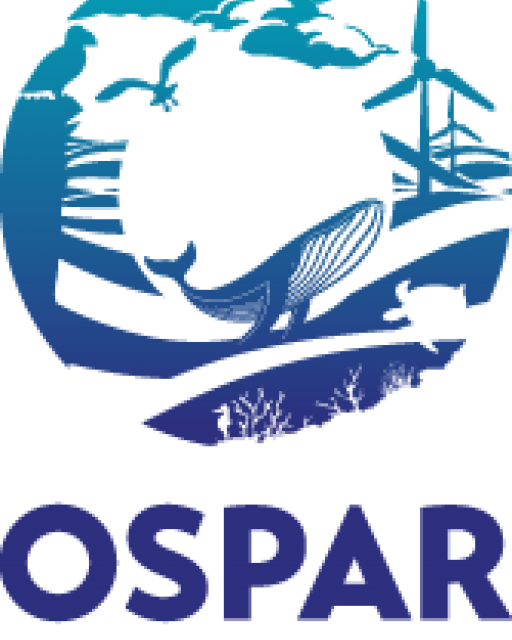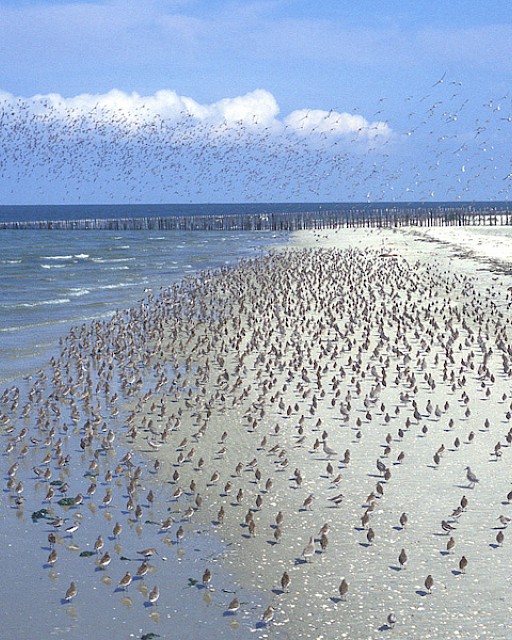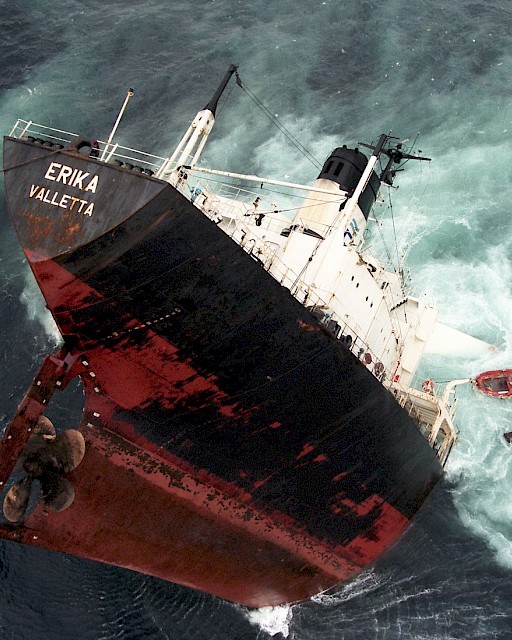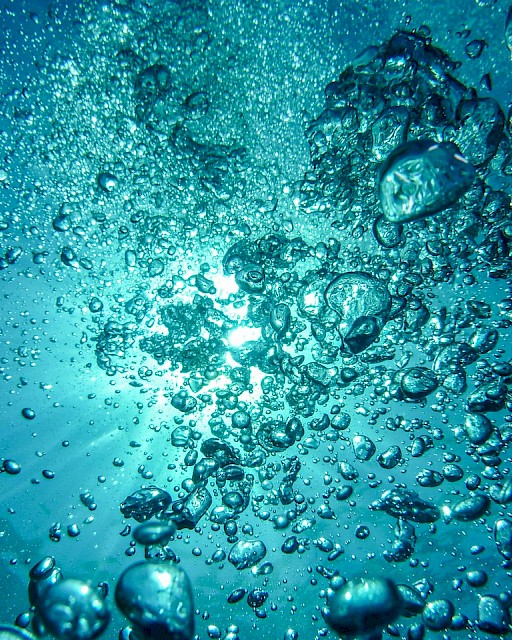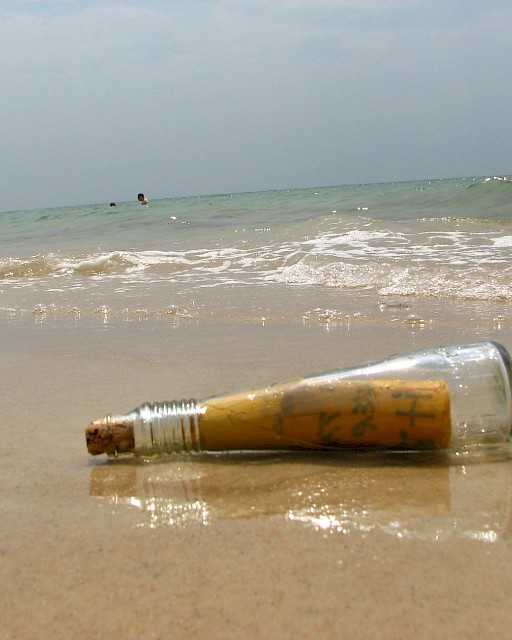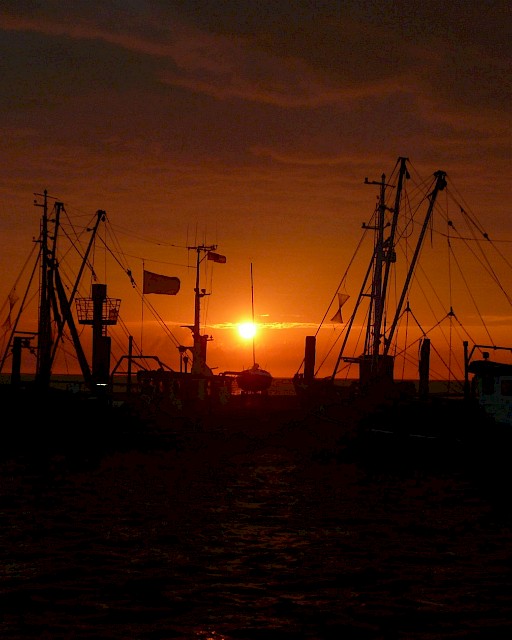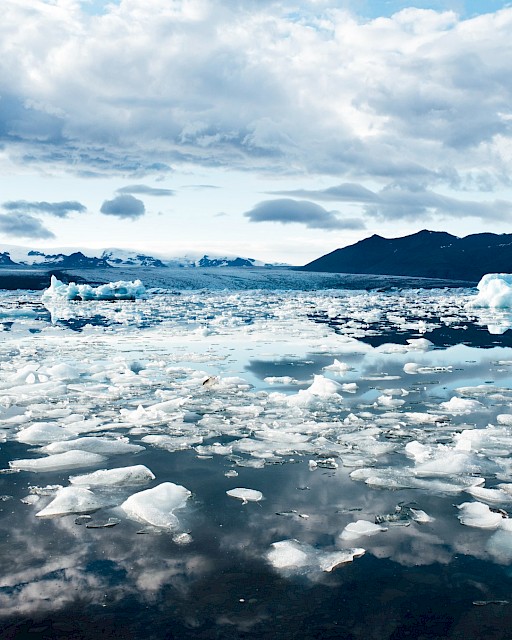OSPAR Common Indicators
The common indicators have been adopted by the OSPAR Commission. These indicators are the basis for regular OSPAR assessments of the changing status of the marine environment and the intensity of pressures from human activities. Common indicators are adopted for specific OSPAR Regions and ensure consistency and comparability of updated assessments over time.
Indicators under development are referred to as candidate indicators. The list of candidate indicators is a live document and is not published here. OSPAR publishes pilot assessments based on the candidate indicators occasionally to demonstrate the concept and to make information from the candidate indicators available.
The common indicators deliver assessments at regular intervals which are published in the OSPAR Assessment Portal. The frequency of updates to the indicators vary depending e.g. on the frequency of monitoring efforts or the speed at which the indicator is foreseen to demonstrate a change. Typically, indicator assessments are update every 2 or 3 years or every 6 years.
The indicators are based on information from monitoring programmes described in the Coordinated Environment Monitoring Programme (CEMP). The programmes are described in the CEMP Appendices, and details, including method descriptions for the indicator calculations, are included in the CEMP Guideline Agreements.
Theme A: Cross-cutting issues (CoG)
Theme A: Cross cutting issues (under the Coordination Group)
Strategic | JAMP/CEMP | JAMP Product | CEMP | CEMP | CEMP | Common in | Latest |
| S10-S12 | A1 | Ocean acidification assessment | A1: Ocean Acidification; | QSR 2023 - Ocean Acidification | |||
| S7 | A2 | Cumulative effects assessment (ICG-EcoC) | |||||
| S10-S12 | A3 | Assessment of climate change impacts in the marine environment | |||||
| S7 | A4 | Socio-economic assessment | |||||
| A5 | ABNJ assessment |
Theme B: Biodiversity and Ecosystems (BDC)
Theme B – Biodiversity and Ecosystems coordinated by the Biodiversity Committee and the Environmental Impacts of Human Activities Committee
Strategic | JAMP/CEMP | JAMP Product | CEMP | CEMP | CEMP | Common in | Latest |
| S5 | BB1 | M3 - Common indicator assessment on seal abundance and distribution (Regions I – III: repeat assessment) | Mammals – Seal abundance and distribution (M3) | Agreement 2016-11 | BB1: Abundance and distribution of seals (M3) BB1 – M3 | I, II, III | QSR 2023 - Seal Abundance and Distribution |
| S5 | BB2 | M4 - Common indicator assessment on abundance and distribution of marine mammals (Regions II - IV: repeat assessment, Region I: new) | Mammals – Abundance and distribution at the relevant spatio-temporal scale of cetacean species regularly present (M4) | Agreement 2018-09 | BB2: Cetacean abundance and distribution (M4) BB2 - M4 | II, III, IV | QSR 2023 - Abundance and distribution of cetaceans |
| S5 | BB3 | M5 - Common indicator assessment on grey seal pup production (Regions I - III: repeat assessment) | Mammals – Grey seal pup production (M5) | Agreement 2016-12 | BB3: Grey seal pup production (M5) BB3 – M5 | I, II, III | QSR 2023 - Grey seal pup production |
| S5 | BB18 | M6 - Common indicator assessment on marine mammal bycatch (Regions II - IV: repeat assessment, Region I: new) | Mammals - Marine Mammal Bycatch (M6) | Agreement 2022-03 | BB18: Marine mammal bycatch (M6) BB18 – M6 | II, III, IV | QSR 2023 - Marine mammal by-catch |
| S5 | BB22/H15 | M7 - Candidate indicator assessment on status and trends of persistent chemical in marine mammals (Region I, II, III, IV: repeat assessment, but seek promotion to Common Indicator) (BDC&HASEC) | QSR 2023 - Pilot Assessment of Status and Trends of Persistent Chemicals in Marine Mammals | ||||
| S5 | BB4 | B1 – Common indicator assessment on marine bird abundance (Region I - IV: repeat assessment, Region V: new) | Birds – Marine bird abundance (B1) | Agreement 2016-09 | BB4: Marine bird abundance (B1) BB4 (B1) | I, II, III, IV | QSR 2023 - Marine Bird Abundance |
| S5 | BB23 | B1 - Pilot assessment on at sea marine bird abundance (Region II: repeat assessment, Region I, III, IV: new assessment) | QSR 2023 - Pilot assessment of marine bird abundance - Non-breeding offshore birds | ||||
| S5 | BB5 | B3 – Common indicator assessment on marine bird breeding success (Regions I – IV: repeat assessment, Region V: new) | Birds – Marine bird breeding productivity (B3) | Agreement 2016-10 | BB5: Marine bird breeding productivity (B3) BB5 (B3) | I, II, III, IV | QSR 2023 - Marine bird breeding productivity |
| S5 | BB24 | B5 - Pilot Assessment on Marine bird bycatch (Regions I-V: repeat assessment, but seek promotion to Common Indicator) | QSR 2023 - Pilot assessment of marine bird bycatch | ||||
| S5 | BB25 | B7 - Pilot Assessment on marine bird habitat quality (Region II: repeat assessment; Regions I and III-V: new) | QSR 2023 - Pilot assessment of marine bird habitat quality | ||||
| S5 | BB6 | FC1 – Common indicator assessment on recovery of sensitive fish species (Regions II-V: repeat assessment, Region I: new) | Fish – Recovery of sensitive fish species (FC1) | Agreement 2018-05 | BB6: Fish abundance (FC-1) BB6 (FC1) | II, III, IV, V | QSR 2023 - Recovery of sensitive fish species |
| S5 | BB7 | FC2 – Common indicator assessment on proportion of large fish (Large Fish Index) (Regions II – V: repeat assessment, Region I: new) | Fish – Proportion of large fish (large fish index) (FC2) | Agreement 2018-05 | BB7: Proportion of large fish (LFI) (FC-2) BB7 (FC2) | II, III, IV, V | QSR 2023 - Proportion of large fish (Large Fish Index) |
| S5 | BB19 | FC3 – Pilot assessment on mean maximum length of demersal fish and elasmobranchs (Regions II-IV: seek promotion to common indicator, Regions I and V: new pilot assessment) | Fish - Mean maximum length of demersal fish and elasmobranchs (FC3) | Agreement 2018-05 | BB19: Mean maximum length of demersal fish and elasmobranchs (FC3) BB19 (FC3) | QSR2023 - Pilot Assessment of Mean Maximum Length of Fish | |
| S5 | BB21 | BH1 – Common Indicator on Sentinels of the seabed (Region IV: repeat assessment, Regions II and III: new) | Benthic Habitats - Sentinels of the Seabed (BH1) | Agreement 2023-02 | IV | QSR 2023 - Sentinels of the seabed | |
| S5 | BB8 | BH2 – Common indicator assessment on condition of benthic habitat communities: the common conceptual approach (Regions I-V: repeat assessment) | Benthic Habitats – Condition of benthic habitat communities (BH2) | Agreement 2018-06 | BB8: Condition of benthic habitat defining communities (MMI) (BH2) BB8 (BH2) | QSR2023 - Condition of Benthic Habitat Communities: The Common Conceptual Approach | |
| S5 | BB8 | BH2a – Common indicator assessment of some coastal habitats exposed to nutrient and organic enrichment (Regions II-IV: repeat assessment, Regions I and V: new) | Benthic Habitats – Condition of benthic habitat communities (BH2) | Agreement 2018-06 | BB8: Condition of benthic habitat defining communities (MMI) (BH2) BB8 (BH2) | I, II, III, IV, V | QSR 2023 - Condition of Benthic Habitat Communities: Assessment of some Coastal Habitats in Relation to Nutrient and/or Organic Enrichment |
| S5 | BB8 | BH2b – Common indicator assessment on condition of benthic habitat communities (Region II: repeat assessment, Regions I and III-V: new) | Benthic Habitats – Condition of benthic habitat communities (BH2) | Agreement 2018-06 | BB8: Condition of benthic habitat defining communities (MMI) (BH2) BB8 (BH2) | II | QSR 2023 - Condition of Benthic Habitat Communities: Margalef diversity in Region II (Greater North Sea) |
| S5 | BB9 | BH3a – Common indicator assessment on extent of physical disturbance to benthic habitats – fisheries assessment (Region II-IV: repeat assessment, Regions I and V: new) | Benthic Habitats – Extent of Physical Disturbance to Benthic Habitats (BH3) | Agreement 2017-09 | BB9: Extent of physical disturbance to benthic habitats (BH3) BB9 (BH3) | I, II, III, IV, V | QSR 2023 - Extent of Physical Disturbance to Benthic Habitats: Aggregate Extraction |
| S5 | BB9 | BH3b – Common indicator assessment on extent of physical disturbance to benthic habitats – aggregate extraction (Region II-IV: repeat assessment, Regions I and V: new) | Benthic Habitats – Extent of Physical Disturbance to Benthic Habitats (BH3) | Agreement 2017-09 | BB9: Extent of physical disturbance to benthic habitats (BH3) BB9 (BH3) | I, II, III, IV, V | QSR 2023 - Extent of Physical Disturbance to Benthic Habitats: Fisheries with mobile bottom-contacting gears |
| S5 | BB9 | BH3c – Pilot assessment on extent of physical disturbance to benthic habitats – offshore installations (Region I-V: repeat assessment) | Benthic Habitats – Extent of Physical Disturbance to Benthic Habitats (BH3) | Agreement 2017-09 | BB9: Extent of physical disturbance to benthic habitats (BH3) BB9 (BH3) | ||
| S5 | BB20 | BH4 – Common indicator assessment on area of habitat loss (Region II except Norwegian waters; promoted from candidate in 2024) | Benthic Habitats - Area of Habitat Loss (BH4) | Agreement 2024-05 | BB20: Area of Habitat Loss (BH4) B20 (BH4) | II | QSR2023 - Pilot Assessment of Area of Habitat Loss |
| S5 | BB10 | PH1/FW5 – Common indicator assessment on changes of phytoplankton and zooplankton communities (Regions II-IV: repeat assessment, Regions I and V: new) | Pelagic Habitats – Change in plankton communities (PH1/FW5) | Agreement 2018-07 | BB10: Plankton lifeforms (PH-1/FW-5) BB10 (PH1/FW5) | II, III, IV | QSR 2023 - Changes in Phytoplankton and Zooplankton Communities |
| S5 | BB11 | PH2 – Common indicator assessment on plankton biomass and/or abundance (Regions II-IV: repeat assessment, Regions I and V: new) | Pelagic Habitats – Changes in plankton biomass and zooplankton abundance (PH2) | Agreement 2019-07 | BB11: Plankton biomass and/or abundance (PH-2) BB11 (PH2) | II, III, IV, V | QSR 2023 - Changes in Phytoplankton Biomass and Zooplankton Abundance |
| S5 | BB12 | PH3 – Common indicator assessment on changes in biodiversity index(es) (Region III: repeat assessment, Region II and IV: new common indicator assessment, Regions I and V: new pilot assessment) | Pelagic Habitats – Changes in plankton diversity (PH3) | Agreement 2019-07 | BB12: Plankton diversity index (PH-3) BB12 (PH3) | II, III, IV | QSR 2023 - Changes in Plankton Diversity |
| S7 | BB13 | NIS3 – Common indicator assessment on Trends in introduction of new record of NIS introduced by human activities (Region II - IV: repeat assessment, Regions I and V: new pilot assessment) | Non-Indigenous Species –Changes to non-indigenous species communities (NIS) | Agreement 2018-04 | BB13: Trends in arrival of new non-indigenous species (NIS3) BB13 (NIS) | II, III, IV, V | QSR 2023 - Trends in new records of non-indigenous species introduction by human activities |
| S5 | BB14 | FW2 – Pilot assessment on production of phytoplankton (Regions II-IV: seek promotion to common indicator, Regions I and V: new pilot assessment) | Food Webs – Production of Phytoplankton | QSR 2023 - Pilot Assessment of Primary Productivity | |||
| S5 | BB14 | FW3 – Common indicator assessment on size composition in fish communities (TyL) (Regions II – IV: repeat assessment, Regions I and V: new) | Food Webs – Size composition in fish communities (FW3) | Agreement 2018-05 | BB15: Size composition in fish communities (FW3) BB15 (FW3) | II, III, IV | QSR 2023 - Size composition of fish communities |
| S5 | BB16 | FW4 – Common indicator assessment on changes in average trophic level of marine predators (cf MTI) (Region IV: repeat assessment) | Food Webs – Change in average trophic level of marine predators (FW4) | Agreement 2018-08 | BB16: Changes in average trophic level of marine predators (FW4) | IV | QSR 2023 - Changes in average trophic level of marine predators |
| S5 | BB26 | FW7 – Pilot assessment on fish biomass and abundance of dietary functional groups (Regions II – IV: repeat assessment, Regions I and V: new) | |||||
| S5 | BB27 | FW9 – Pilot assessment on ecological network analysis (Region II: repeat assessment, Region IV and V: new) | QSR 2023 - Pilot Assessment of Ecological Network Analysis Indices |
Theme B: Biodiversity and Ecosystems (EIHA)
Theme B – Biodiversity and Ecosystems coordinated by the Environmental Impacts of Human Activities Committee
Strategic | JAMP/CEMP | JAMP Product | CEMP | CEMP | CEMP | Common in | Latest |
| S4 | BE1 | Common indicator assessment on beach litter | Marine litter on beaches | Agreement 2020-02 | BE1: Marine litter on Beaches BE1 | I, II, III, IV | QSR 2023 - Abundance, composition and trends of beach litter |
| S4 | BE2 | Common indicator assessment on Seafloor litter | Marine Litter on the seafloor | Agreement 2017-06 | BE2: Marine Litter on the Seafloor BE2 | II, III, IV | QSR 2023 – Composition and spatial distribution of litter on the seafloor |
| S4 | BE3 | Common indicator assessment on plastic particles in Fulmar stomachs | Monitoring of plastic particles in stomachs of fulmars | Agreement 2015-03 | BE3: Monitoring of plastic particles in stomachs of seabirds BE3 | II | QSR 2023 - Plastic particles in fulmar stomachs in the North Sea |
| S4 | BE8 | Common indicator assessment on marine litter ingested by sea turtles | Litter ingested by sea turtles | Agreement 2020-03 | BE8: Litter ingested by sea turtles BE8 | IV | QSR 2023 - Marine litter ingested by sea turtles |
| S4 | BE10 | Candidate indicator assessment on microlitter (including microplastics) in seafloor sediments | Microlitter (including microplastics) in seafloor sediments | Agreement 2024-06 | I, II, III, IV, V | ||
| S7 | BE4 | Common indicator assessment on pressure of impulsive noise | Impulsive noise | Agreement 2017-07 | BE4: Impulsive noise BE4 | II, III, IV | QSR 2023 - Distribution of reported impulsive sound in the sea |
| S7 | BE4 | Common indicator assessment on risk of impact of impulsive noise on biota | Impulsive noise | Agreement 2017-07 | BE4: Impulsive noise | II, III, IV | QSR 2023 - Risk of impact from anthropogenic impulsive sound |
| S7 | BE9 | Common indicator assessment on ambient noise (if approved) | Ambient noise | Agreement 2021-05 | BE9: Ambient noise BE9 | II | QSR 2023 - Pilot Assessment of Ambient Noise |
| S7 | BE7 | Assessment of Data on the Management of Wastes or Other Matter (Dredged Material) – for the period 2020-2026 | Dumping and placement of wastes or other matter at sea | Agreement 2017-04 | BE7: Dumping and placement of wastes or other matter at sea BE7 | IA17 – Dredged Material | |
| S7 | BE5 | Encounters with dumped chemical and conventional weapons | BE5: Encounters with dumped chemical and conventional weapons BE5 | ||||
| S7 | BE6 | Offshore Renewable Energy Developments | BE6: Offshore Renewable Energy Developments BE6 |
Theme E: Eutrophication (HASEC)
Theme E – Eutrophication coordinated by the Hazardous Substances and Eutrophication Committee
Strategic | JAMP/CEMP | JAMP Product | CEMP | CEMP | CEMP | Common in | Latest |
| S1 | E3/E4 | Common indicator assessment on Waterborne & atmospheric nutrient input trends | RID - Nutrient Inputs from Land-Based (Diffuse and Point) Sources CAMP - Nutrient Inputs via the Atmosphere | Agreement 2022-07 | E3: RID - Nutrient Inputs From Land-Based (Diffuse and Point) Sources E4: CAMP - Nutrient Inputs via the Atmosphere E4 | I, II, III, IV, V | QSR 2023 - Inputs of nutrients to the OSPAR Maritime Area |
| S1 | E5 | Potential common indicator assessment on Follow-up of nutrient reduction plans / PARCOM 88/2 | Nutrient reduction plans / PARCOM 88/2 | Agreement 2022-07 | |||
| S1 | E1 | Common indicator assessment on Winter nutrient concentrations | Nutrient concentrations in seawater (DIN / DIP) | Agreement 2022-07 | E1: Nutrient concentrations in seawater (DIN / DIP) E1 | II | QSR 2023 - Winter nutrient concentrations in the Greater North Sea, Celtic Seas and Bay of Biscay and Iberian Coast |
| S1 | E6 | Potential common indicator assessment on Total nutrient concentrations | Total nutrient concentrations | Agreement 2022-07 | |||
| S1 | E2 | Common indicator assessment on Growing season concentrations of chlorophyll-a | Direct and indirect eutrophication effects including chlorophyll, water transparency, abundance of macrophytes, benthic species shift, phytoplankton species shift and oxygen | Agreement 2022-07 | E2: Direct and indirect eutrophication effects including chlorophyll, water transparency, abundance of macrophytes, benthic species shift, phytoplankton species shift and oxygen E2 | II, III | QSR 2023 - Concentrations of chlorophyll-a in the Greater North Sea, Celtic Seas and Bay of Biscay and Iberian Coast |
| S1 | E2 | Common indicator assessment on Concentrations of dissolved oxygen near the seafloor | Direct and indirect eutrophication effects including chlorophyll, water transparency, abundance of macrophytes, benthic species shift, phytoplankton species shift and oxygen | Agreement 2022-07 | E2: Direct and indirect eutrophication effects including chlorophyll, water transparency, abundance of macrophytes, benthic species shift, phytoplankton species shift and oxygen E2 | II, III, IV | QSR 2023 - Concentrations of dissolved oxygen near the seafloor in the Greater North Sea, Celtic Seas and Bay of Biscay and Iberian Coast |
Theme H: Hazardous Substances (HASEC)
Theme H – Hazardous Substances coordinated by the Hazardous Substances and Eutrophication Committee
Strategic | JAMP/CEMP | JAMP Product | CEMP | CEMP | CEMP | Common in | Latest |
| S2 | H13/H14 | Common indicator assessment on Inputs of heavy metals via water and air | RID - Contaminant Inputs From Land-Based (Diffuse and Point) Sources CAMP - Contaminant Inputs via the Atmosphere | Agreement 2016-04 | H13: RID - Contaminant Inputs From Land-Based (Diffuse and Point) Sources H14: CAMP - Contaminant Inputs via the Atmosphere H14 | II | QSR 2023 - Inputs of Mercury, Cadmium and Lead via Water and Air to the Greater North Sea |
| S2 | H1 | Common indicator assessment on Status and trends for heavy metals (mercury, cadmium and lead) in fish and shellfish & sediment | Metal concentrations in sediment and biota | Agreement 2016-04 | H1: Metal concentrations in sediment and biota H1 | II, III, IV | QSR 2023 - Status and trend for heavy metals (Mercury, Cadmium and Lead) in fish, shellfish and sediment |
| S2 | H3 | Common indicator assessment on Status and trends in the concentrations of polycyclic aromatic hydrocarbons (PAHs) in shellfish & sediment | PAH concentrations in sediment and biota | Agreement 2016-04 | H3: PAH concentrations in sediment and biota H3 | I, II, III, IV | QSR 2023 - Status and trends in the concentrations of Polycyclic Aromatic Hydrocarbons (PAHs) in shellfish and sediment |
| S2 | H4 | Common indicator assessment on Status and trends in the levels of imposex in marine gastropods (TBT in Shellfish) | Organotins concentrations and biological effects | Agreement 2016-04 | H4: Organotins concentrations and biological effects H4 | II, III, IV | QSR 2023 - Status and trends in the levels of imposex in marine gastropods (TBT in shellfish) |
| S2 | H4 | Common indicator assessment on Status and trends of TBT in sediments | Organotins concentrations and biological effects | Agreement 2016-04 | H4: Organotins concentrations and biological effects H4 | II, III, IV | QSR 2023 - Status and trends of organotin in sediments in the Southern North Sea |
| S2 | H4 | Common indicator assessment on Status and trends of polychlorinated biphenyls (PCB) in fish and shellfish & sediment | PCB Concentrations in sediment and biota | Agreement 2016-04 | H2: PCB Concentrations in sediment and biota H2 | I, II, III, IV | QSR 2023 - Status and trends of Polychlorinated Biphenyls (PCB) in fish, shellfish and sediment |
| S2 | H5 | Common indicator assessment on Trends in concentrations of polybrominated diphenyl ethers (PBDEs) in fish and shellfish &sediment | Brominated Flame Retardants concentrations in sediment and biota | Agreement 2016-04 | H5: Brominated Flame Retardants concentrations in sediment and biota H5 | I, II, III, IV | QSR 2023 - Status and trends of Polybrominated Diphenyl Ethers (PBDEs) in biota and sediment |
| S2, S5 | BB22/H15 | Pilot assessment on Trends and Status of persistent chemicals in marine mammals (HASEC and BDC) | QSR 2023 - Pilot Assessment of Status and Trends of Persistent Chemicals in Marine Mammals | ||||
| H6 | Pre-CEMP: Planar PCBs in sediment and biota | H6 - Planar PCBs in sediment and biota H6 | |||||
| H7 | Pre-CEMP: Alkylated PAHs in sediment and biota | H7 - Alkylated PAHs in sediment and biota | |||||
| H9 | Pre-CEMP: Polychlorinated dibenzodioxins and furans in sediment and biota | H9 - Polychlorinated dibenzodioxins and furans in sediment and biota H9 | |||||
| H10 | Pre-CEMP: PAH and metal-specific relevant Biological Effects | H10 - PAH and metal-specific relevant Biological Effects H10 | |||||
| H11 | Pre-CEMP: General Biological Effects (Whole sediment bioassays, Sediment Pore-Water and Elutriate Bioassays, Water Bioassays,CYP1a, Lysosomal Stability, Liver Histopathology/ Macroscopic liver neoplasms, Externally Visible Fish Diseases, Reproductive Success in Fish); | H11 - General Biological Effects (Whole sediment bioassays, Sediment Pore-Water and Elutriate Bioassays, Water Bioassays,CYP1a, Lysosomal Stability, Liver Histopathology/ Macroscopic liver neoplasms, Externally Visible Fish Diseases, Reproductive Success in Fish) H11 | |||||
| H12 | Pre-CEMP: PFAS in biota (primary matrix) and seawater (secondary matrix) | H12 - PFAS in biota (primary matrix) and seawater (secondary matrix) H12 |
Theme O: Offshore Oil and Gas Industry (OIC)
Theme O – Offshore Oil and Gas Industry coordinated by the Offshore Industry Committee
Strategic | JAMP/CEMP | JAMP Product | CEMP | CEMP | CEMP | Common in | Latest |
|---|---|---|---|---|---|---|---|
| S2, S4, S8, S9, S12 | O1 | Assessment on impacts of the offshore oil and gas industry on the marine environment (OIC) | Discharges, spills and emissions associated with the offshore oil and gas industry | O1: Discharges, spills and emissions associated with the offshore oil and gas industry | QSR 2023 - Assessment of impacts of the offshore oil and gas industry on the marine environment |
Theme R: Radioactive Substances (RSC)
Theme R – Radioactive Substances coordinated by the Radioactive Substances Committee
Strategic | JAMP/CEMP | JAMP Product | CEMP | CEMP | CEMP | Common in | Latest |
| S3 | R3 | Assessment on discharges of radionuclides from the nuclear sector (RSC) | Discharges of radionuclides associated with the nuclear sector | R3: Liquid discharges from nuclear installations | |||
| S3 | R1 | Assessment on environmental concentrations of artificial radionuclides in seawater | Environmental concentrations of artificial radionuclides in seawater | R1: Environmental concentrations of radionuclides associated with the nuclear sector R1 |

